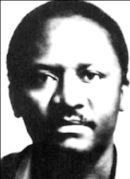Speculative Arts Column
In this column of Kiro Magazine, we look deep into Afrofuturism, visiting authors of this genre, and how it is emancipating Africans and people of African descent.
Articles

The Legacy of Sun Ra, part 1- Origins of racism
by Editor
Sun Ra was an American Jazz musician, poet and philosopher who grew up on the South side of Chicago in Jim Crow segregated America founded and structured on Anti Black racism. He was born Herman Poole Blount but adopted the name Sun Ra (Ra is the Egyptian god of the sun). Known for his experimental music, cosmic philosophy, prolific output, and theatrical performances, he claimed to be an alien from Saturn on a mission to preach peace and developed a mythical persona that made him a pioneer of Afrofuturism.
Afrofuturism has been described as a cultural aesthetic and philosophy of science and history that explores the intersection of the African and the African diaspora culture with science and technology. It addresses themes and concerns of the African and African diaspora through technoculture and speculative fiction, encompassing a range of media and artists with a shared interest in envisioning black futures that stem from African and Afro-diasporic influences.
Let us first understand what Anti Black African racism really is. Its origins, formation, psychology and impact on African people today. The use of black and white in mythological terms can be traced back in 6th century olden Persia B.C.E.
Zoroastrianism, made the separation of black and white the cornerstone of its mythology. Zurathustra, the founder of this doctrine, essentially held that there are two forces operating in the world: Ahura Mazda and the good gods of light; and Angra Mainyu and the evil gods of darkness. These two forces have been locked in conflict since the beginning of creation, but the god of light will ultimately triumph over the god of darkness, and it is the task of the virtuous to identify roundly and completely with the forces of light.
These powerful ideas about the inevitable conflict between good and evil came to influence the ideas underlying all the big religons of the new world. Christianity, Judaism and Islam. The Avesta, the sacred text of Zoroastrianism painted this conflict in Black and White. By the time more extensive contacts between Africans and Europeans began in the fifteenth and sixteenth centuries, a European mythology of deification and demonization was already well established: gods wore white skins, devils wore black skins and it was the duty of the gods to vanquish the devils.
Part 2 will explore how Sun Ra cultivated his persona.

The Space Cadet
by Editor
Purple under the harshness of the white light
He leaped high, blurring his prey for only a second
His spear sailed across the sea of greyed rock and sand
Weighty; faring well against the weak god of the moon,
Perhaps the gods on earth were mightier,
For the weapon of old, fashioned in the way the fiery iron god of their brothers instructed, satisfyingly met its prey,
And then the purple party rode in; tiny feet followed by larger ones and even larger ones, leaving stark footprints in the rock much like the one their earthly ancestors walked in.
Perhaps, their descendants will too,
In metal and fire.
Growing up, I took shelter in my imagination. Wild and escapist it was. The first time I travelled to my imagined space, was after a history class on ethnic groups of Tanzania. One such group; were the Nyamwezi or Banyamwezi as we called them. The name was stood out to me. In Runyoro, my mother tongue, Banyamwezi translated as “People of the moon”.
Fascinating!
How did they come into the name? Did they live on the moon long ago and only came on earth a few centuries back? How would an African tribe like the Banyamwezi look like on the moon? How would an African kingdom look like in space? I then imagined a munyamwezi man with his trusty spear on the moon. Would he need it?
In that moment I felt a power I had never felt before. A beauty I had never envisioned before. I was beginning to see freedom in space.
Self-denigration.
In my excitement, I tried to recall any references of a Black man in space…and couldn’t. In movies, in educational texts, in our oral tradition…nothing. Afrofuturism; I did not know of the term then. I didn’t know that when I envisioned the Banyamwezi in space, I had envisioned a future. Not in literal form, but in philosophy. A perspective of limitless innovation and creativity.
I wanted to write but this was more than writing. It was healing. It was at this time that I began to appreciate our cultures, rich and beautiful they are. I grew up aware of the deadly ethnic rivalries between my people, the Banyoro and the Baganda people. The two groups spoke of each other in bitter hateful terms, in ancestral duels of supremacy. With my new-found perspective, I was suddenly sad, and then hopeful. Both rich and true and different, what a grand story I could write on both!
Afrofuturism then, is a powerful tool for reconciliation, restoration and unity among Uganda’s ethnic groups considering their troubled histories.

Of what relevance is Okot p'Bitek to Afrofuturism?
by Editor
Ugandan poet, novelist and philosopher Okot p’Bitek is one of Uganda’s and Africa’s greatest post-colonial creative writers. His epic poem, Song of Lawino can be seen by the modern Ugandan creative as a founding work on Ugandan Afrofuturism.
In this famous poem, through Lawino and Acol’s verbal brawl, he tells what the future Acholi man and woman’s traditional institutions after Independence ought to and ought not to be. Okot’s heroine, Lawino and antagonists Clementine and Acol are the symbols of the journey of the Acholi traditional institutions pre-colonial, colonial, post-colonial and future.
Lawino’s husband, Acol marries a second woman called Clementine, who dresses and speaks in ways that devalue African traditions while upholding western ways, something Acol likes in her, and in turn holding Lawino, his traditional wife in disdain. Acol marries Clementine because of her aspiration to western beauty standards, he insults Lawino in English in a show of English’s superiority to Acholi–the only language she speaks. He rebukes her for her illiteracy, and her lack of a Western name by Western baptism.
Lawino’s heroics in challenging Western beauty standards, western literacy, western language and western theology for her pride in Acholi traditional values, African feminism, self-respect, and personal pride, strongly signal Afrofuturism.
Afrofuturism can be understood as an Afro centric cultural philosophy of science, history, psychology, art, language, literature, architecture, and theology that explores the developing intersection of African and African diaspora culture with new world technology.
In the present, which would’ve been Okot p’Bitek’s future, how many times have we seen Ugandans laugh at public figures who struggle with the English language in their speeches? How many times have we heard Ugandan names demonised by Ugandan pastors in Ugandan churches? How many times have we seen anti melanin bleaching creams in Ugandan cosmetic shops? How many times have we seen dark skinned women on Ugandan Television adverts? How many times do we see Ugandans dress in African traditional attire in powerful offices or national ceremonies?
Which Ugandan university has attempted to research Ugandan cultural philosophies lying within Ugandans’ indigenous languages? Which Ugandan university has researched the traditional perspective of the new world’s knowledge about the universe like traditional African perspective on physics, chemistry, biology, mathematics, psychology, history, architecture, music, art, theology and philosophy. Which Ugandan university has attempted to rename plants, animals, birds, organisms, and stones present on earth in Ugandan indigenous languages to bring Ugandans close to their physical universe?
The way of Ocol and Clementine leads to a future of Ugandans’ self-hate, Ugandans’ self-destruction, Ugandans’ stagnation and ultimately Ugandans’ extinction but the way of Lawino is the way of Ugandan liberation, survival and eternity.
Lawino’s African feminism ensures African traditional institutions are maintained and only changed where need be for the better rather than doing away with them completely like Acol and Clementine. This way Lawino is not only an upholder of African institutions but a builder of them and carries them to the future; making Okot p’Bitek’s heroine, an Afrofuturist.
Okot P Bitek himself maintained and built Acholi traditional institutions by having the poem written in the indigenous Acholi language as well as his other works, and published at a Kenyan publishing house signifying his commitments to African based outputs for scholarships by Africans. His expectations for the expansion of such an approach even if it failed to take hold could be called futurist especially considering his post-colonial times.
